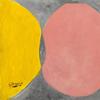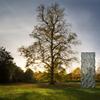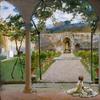British Pavilion's Sarah Lucas Installation Stirs It Up at Venice Biennale
- LONDON, United Kingdom
- /
- May 06, 2015

The British Council is presenting I SCREAM DADDIO, a new exhibition by Sarah Lucas which has been conceived and created for the British Pavilion at the 56th International Art Exhibition – la Biennale di Venezia (May 9-Nov. 22, 2015).
“Sarah is one of our foremost artists and it is entirely appropriate that she should be representing the UK in Venice, the grandest of stages," Emma Dexter, Director Visual Arts at the British Council, said. "Sarah has risen to the occasion, her provocative new pieces interrogate our assumptions about gender and domesticity, drawing on her previous work but on an unprecedented scale.”

Sarah Lucas’s solo presentation for the British Pavilion centers on an extensive new group of works, made specifically for the commission. Ranging in scale from the domestic to the monumental, the works reprise and reinvent the themes that have come to define Lucas’s powerfully irreverent art – gender, death, sex, and the innuendo residing in everyday objects. Throughout this latest group of works, the body – sexual, comedic, majestic – remains a crucial point of return, while Lucas’s work continues to confront big themes with a distinctive wit.
“Humour,” she has remarked, “is about negotiating the contradictions thrown up by convention. To a certain extent humour and seriousness are interchangeable. Otherwise it wouldn’t be funny. Or devastating.”
Responding to the formal, neoclassical spaces of the British Pavilion, Lucas’s sculptures for Venice mark a dramatic new stage in her evolving iconography. Over the past few years, her soft sculptures in tights and wire have increasingly transmuted into bronze, resin and concrete.
Maradona, a grandiose figure in joyous repose – part man, part maypole, part praying mantis – stands in duplicate at the centre of the exhibition. Named after the iconic Argentine footballer, the figure squats on the ground while an enormous phallus soars majestically into the air. Its arched torso and gravity-defying erection are caught between earthbound and transcendent postures – treading a delicate line between beauty and buffoonery. The sculptures’ painted yellow surfaces (deep cream and gold cup) capture the organic texture of their bulbous stuffed nylon prototype.
Combining corporeal resonances with sinuous ‘abstract’ form, Lucas’s new works evoke – and subtly subvert – the Modernist aesthetic of British artists such as Henry Moore and Barbara Hepworth, especially the recurring trope of the reclining nude or lone standing figure. The female body features more literally in a series of plaster sculptures of fragmentary pairs of legs which are gracefully animated through their combination with the ordinary domestic furniture that has featured since Lucas’s earliest installations. These bawdy, empowered muses form a chorus line that upends the traditional objectification of the female form in male art history, while recalling the incomplete bodily casts Lucas has created throughout her career, such as You Know What (1998) or CNUT (2004).
Other works are more domestic in scale and subject. Lucas’s Tit Cat sculptures – again derived from models made from stuffed tights – combine the wiry forms of cats with tied-off, drooping orbs suggestive of breasts. Arching and prancing, their tails variously drooping and rearing, these strange metamorphic creatures epitomise the way in which Lucas’s art slides between real and surreal registers. In one work, a cat is presented atop a recliner chair and footstool, both items cast in bronze and concrete; while in another an octopus’s bronze tentacles sprawl over a workaday wooden chair (also fashioned from bronze), its lumpy extremities spilling erotically onto the floor. In both, domestic scenes are translated into weighty simulacra, the chair assuming the status of a throne, the animals of magical shape-shifters.
I SCREAM DADDIO is accompanied by a new book, designed by Julian Simmons and published by the British Council, with the generous support of the Art Fund.










100x100_c.jpg)





